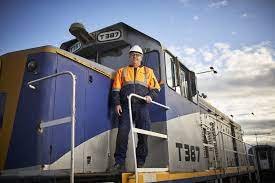
In the bustling world of transportation, where speed, precision, and reliability are paramount, there exists a profession that embodies all these qualities and more—the locomotive driver. Often hidden from the limelight, these skilled professionals play a crucial role in keeping the wheels of industry turning, quite literally. As they sit perched high in the cabin of their powerful machines, they command immense responsibility, guiding tons of metal and cargo across vast distances. But what does it truly entail to be a locomotive driver? Let’s delve into the fascinating world behind the throttle.
The Essence of the Job
At its core, the role of a locomotive driver revolves around safely operating locomotives to transport goods and passengers. However, this simplistic description belies the complexity and significance of their duties. Locomotive drivers are entrusted with the operation of highly sophisticated machinery, requiring a deep understanding of mechanical systems, safety protocols, and route navigation.
Training and Qualifications
Becoming a locomotive driver is not an endeavor for the faint of heart. It requires a combination of education, training, and on-the-job experience. While specific requirements may vary depending on the region and employer, a high school diploma or equivalent is typically the minimum educational requirement.
Following education, aspiring locomotive drivers undergo rigorous training programs conducted by railroad companies or specialized institutions. These programs cover a wide array of topics, including locomotive operation, signaling systems, safety procedures, and emergency protocols. Additionally, trainees often spend considerable time in simulated environments to hone their skills before venturing onto actual rail lines.
Furthermore, locomotive drivers must obtain relevant certifications and licenses to operate trains legally. These certifications typically involve written exams, practical assessments, and periodic renewals to ensure ongoing competence.
On the Job: A Day in the Life
The daily routine of a locomotive driver is anything but mundane. Each day presents new challenges and adventures as they traverse diverse landscapes and weather conditions. A typical workday begins with a thorough inspection of the locomotive and its components, ensuring that everything is in proper working order. Safety checks are paramount, as even minor malfunctions could have catastrophic consequences.
Once the locomotive is deemed fit for operation, the driver receives instructions regarding their assigned route, cargo, and schedule. Precision is key, as they must adhere to strict timetables while prioritizing safety above all else. Throughout the journey, locomotive drivers remain vigilant, constantly monitoring gauges, signals, and track conditions to anticipate and respond to any potential hazards.
Communication also plays a vital role in the day-to-day responsibilities of a locomotive driver. They maintain constant contact with dispatchers and other crew members via radio, providing updates on their progress and receiving guidance as needed. Effective communication is essential for coordinating activities, especially in the case of unexpected delays or emergencies.
Challenges and Rewards
Despite the allure of adventure and the thrill of commanding powerful machines, the life of a locomotive driver is not without its challenges. Long hours, irregular schedules, and extended periods away from home are common realities of the job. Moreover, the inherent risks associated with operating heavy machinery in dynamic environments demand unwavering focus and attention to detail.
However, for those who are passionate about the railroad industry, the rewards far outweigh the challenges. The sense of pride and accomplishment that comes with safely delivering cargo or passengers to their destinations is unparalleled. Moreover, the camaraderie forged among crew members during long journeys fosters a strong sense of community and mutual respect.

The Future of Locomotive Driving
As technology continues to advance, the role of the locomotive driver is evolving alongside it. Automation and remote monitoring systems are becoming increasingly prevalent, promising improved efficiency and safety. While these developments may lead to changes in job responsibilities, the human element will always remain essential in ensuring the smooth operation of railroad networks.
In conclusion, the life of a locomotive driver is one defined by dedication, skill, and a profound sense of responsibility. Behind the throttle lies a world of adventure, challenges, and triumphs, where each journey is a testament to the enduring spirit of the railroad industry. As long as there are rails to be traveled and cargo to be transported, the locomotive driver will continue to hold a cherished place in the annals of transportation history.
